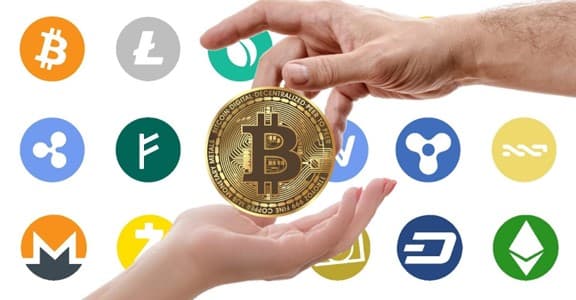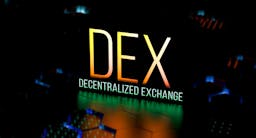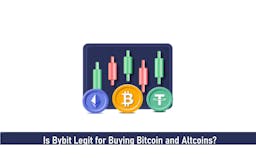
Was there ever a time you had to deal with stuck or unconfirmed crypto transactions, and you’re just being upset lately?
Worry no more, as this article will give you several measures you can take to fix the problem and resume your crypto activities.
What Is a Stuck Cryptocurrency Transaction?
Image source: Pexe
A cryptocurrency transaction occurs when individuals trade through digital assets like Bitcoin and Ethereum. Blockchain documents the deal in the form of an open ledger.
Typically, networks of servers (also referred to as miners) confirm transactions by solving challenging mathematical puzzles to determine the transaction’s legitimacy.
A transaction that gets stuck indicates the network was unable to validate it and prevents said transaction from being uploaded to the blockchain.
It is standard for Bitcoin transactions to move slower, with just a set number of transactions allotted to various sections of the Bitcoin blockchain.
Notwithstanding, you should look for solutions once a confirmation on a transaction has exceeded 24 hours.
Read along to understand in-depth –why your transactions get stuck on the blockchain– or scroll to the “steps to resolve ” section to get to the nitty gritty on how you can resolve your issue.
Main Reasons Why Bitcoin Transactions Get Stuck
Lots of factors can cause BTC transactions to get stuck or unconfirmed. We’ve included a few of the most frequent causes below.
- Congestion On The Blockchain System
The blockchain system is congested and needs more versatility. It has set limits on how many transactions it can process in a block.
Congestion is the primary reason Bitcoin transactions get stuck; swiftly accompanied by the ever-growing popularity of the mother of all crypto, more and more traders continue transacting on the Bitcoin network.
Trades with more significant expenses are prioritized, while those involving less or inadequate fees are put on hold.
In times of high demand, a transaction can require additional time to be added to a block, which would cause an interruption.
- Insufficient Rate Of Transactions
A transaction fee is necessary to encourage miners to pay attention and include Bitcoin trades on the blockchain.
If users select low transaction costs or skip any costs, their transactions may go unconfirmed or become stuck.
Miners prefer cost transactions considering that they earn them as an incentive for generating blocks to the blockchain.
Creating a reasonable cost guarantees that your transaction is executed as soon as possible.
- Transaction Size
The number of bytes in a Bitcoin transaction determines how quickly it will be processed.
A block in the Bitcoin network can hold a specific number of transactions due to limitations on block size.
A transaction’s chance of being listed in the following block may decrease if it takes up too much block space. As a result, such transactions might only be confirmed after a longer processing time.
- Unconfirmed Inputs/Entries
Bitcoin transactions typically involve a range of inputs, or more precisely, a transacted amount being spent.
The data provided for a particular transaction could get unconfirmed or stuck, resulting in the whole transaction getting stuck.
Thus, if you earned Bitcoins in an unconfirmed transaction in the past, there may be obstacles when you try to spend them in subsequent transactions.
- Software/Wallet Issue
Problems with the software or wallet used for dealings might be the cause of transaction lags sometimes. The transaction procedure can be hampered and stopped due to outdated software or wallet issues.
To reduce the possibility of transaction delays, you must ensure you employ a functional wallet and the most recent upgrade to your software.
What happens to unconfirmed crypto transactions?
Unconfirmed crypto transaction results in the following:
- Placement in a Block: Network miners or validators choose the next block’s transactions from the mempool. They rank transactions according to criteria, including transaction fees and transaction volume. Due to miners’ incentives to add transactions that will increase fees, transactions with more significant fees are frequently prioritized.
- Confirmation: When a transaction appears in a block, it is called “confirmed.” To make a transaction finalized and permanent for most cryptocurrencies, it must have a specified amount of approvals. The blockchain grows in complexity with each new block added, forming a series of blocks that adds extra safety to the verified transactions.
- Disapproval or Expiry: A transaction could end up rejected or “dropped” from the mempool if it remains there for a long time without its inclusion in a block. Expiry may occur due to a clogged network, a low cost of transactions, or if the transaction is rendered illegitimate (for example, caused by insufficient funds or a wrong recipient address).
The specifics of unconfirmed transactions may differ a bit based on the currency’s fundamental technological advances and agreement process.
For instance, emerging cryptocurrencies may use proof-of-stake (PoS) or other consensus mechanisms, while older cryptocurrencies like Bitcoin and Ethereum use proof-of-work (PoW) consensus, thus could have an impact on the transaction’s approval processes.
Steps to Resolve The Issue
The following steps can help you speed up the process of resolving stuck or unconfirmed cryptocurrency transactions.
- Check the Status of the Transaction
Checking the status of a Bitcoin transaction is the initial step in resolving a stuck or unconfirmed transaction.
To determine if your transactions have been disseminated to the network, consult a blockchain analyzer or your wallet’s transaction log.
Record the transaction ID (TXID) if it has been disseminated so that it can be looked into afterward.
- Review for Network Congestion
During times of significant congestion, cryptocurrency networks, particularly those of Bitcoin with Ethereum, are susceptible to trade validation lags.
If you want to figure out if the lag is rendered by traffic congestion, look at the present network status. Mempool.space and Etherscan are websites where you can get helpful information about network congestion and transaction costs.
- Adjust The Transaction Fees
Low transaction fees are some of the causes why transactions get stuck. More transaction fees may prevent miners from favoring higher-cost transactions.
Examine the suggested payment amount for prompt verification due to network traffic.
Most digital wallets let you modify the charge or select from a variety of fee methods personally to hasten the authorization process.
- RBF or Opt-In RBF
Replace-By-Fee (RBF) or Opt-In RBF is supported by your wallet, you can raise the fee on an unverified transaction to enhance the likelihood that it will be incorporated in the upcoming block.
Using this tool, you can substitute the first transaction with an alternative with a greater charge. RBF gives miners an incentive to give your transaction priority.
- Utilizing Child-Pays-For-Parent (CPFP)
When access is granted to your stuck transaction’s destination IP address, a CPFP transaction can be performed by you.
With this method, you can design a fresh transaction requiring the funds from the unresolved or stuck transaction and implement a surcharge to entice miners to validate transactions simultaneously.
This method can help activate transactions when the sender controls the recipient’s IP address.
- Hold on for Approval or Time Out
Sometimes, it is best to exercise patience and hold off on making a transaction until a network connection can confirm it automatically.
After a predetermined period, unconfirmed transactions are often removed from the network’s mempool of Bitcoin networks.
However, depending on network activity and pricing policies, this could take several days or hours to complete.
- Contact Bitcoin Wallet/Exchange Support
Have you applied all the alternatives mentioned earlier, and your transaction remains stuck? You can speak with your Bitcoin wallet or exchange for help.
They may have more facilities or instruments that could help tackle the problem. Your transaction ID and any other important details should be provided to hasten the assistance processing.
Reversing Unconfirmed Bitcoin Transactions
To reverse unconfirmed Bitcoin transactions, you have to apply the two major approaches: RBF (replace by fee) and the Double Spending processes.
- The RBF Procedure
Users can resend their initial transaction with a greater fee in this procedure. The first generated transaction will be swapped with a recent one, carrying a higher cost.
The unconfirmed transaction is then deleted and ceases to be included on file.
Recalling that the RBF method operates only with a few Bitcoin wallets is essential.
Before a transaction gets sent, the authorized types will give BTC users an option to select. For RBF to operate, the feature needs to be turned on.
- Double Spending process
This approach should create another transaction with a similar amount and an extra charge.
Sending transactions with an equivalent value using the same wallet is an alternative if the RBF procedure is unavailable or hasn’t been activated.
The current transaction should be submitted directly to you, match the initial transaction’s amount, and input the same amount. An increased transaction charge than the initial fee is used to finish this.
A customized wallet or programming unit might be necessary because the operation entails dual spending (when the same amount of BTC is spent twice).
The stuck Bitcoin will be moved directly to your original wallet IP address as the Bitcoin is being given to you.
It’s essential to remember that transactions conducted through the Bitcoin network are intended to be immutable.
Both techniques have the potential to ‘unstick’ and ‘confirm’ a transaction, but there is a danger that they might not.
Final Verdict
Bitcoin transactions occasionally get stuck or experience delays due to congestion, insufficient transaction rate, transaction size, unconfirmed inputs, and software/wallet issues.
Understanding these reasons can help Bitcoin users avoid potential pitfalls and ensure smoother transaction processing.
Dealing with stuck or unconfirmed transactions can be heart-wrenching, but some steps listed above can be followed to help fix the problem.
To enhance the likelihood that your Bitcoin transaction will be confirmed by checking and adjusting your transaction status, reviewing network congestion, analyzing RBF or CPFP procedures, or contacting Bitcoin wallet/exchange support.
To lessen the likelihood of future hindrances to transactions, keep up with network congestion and pay suggested fees.
Stay informed and take necessary precautions to navigate the Bitcoin network more effectively, making your transactions more efficient and reliable.
Frequently Asked Questions
What is stuck or unconfirmed? Cryptocurrency transaction?
The term “stuck” or “unconfirmed” refers to a cryptocurrency transaction performed on the blockchain system but is still being reviewed and entered into a transaction block.
What are the main reasons for a stuck transaction?
Numerous factors, like low transaction fees, network congestion, or other technical problems, may contribute to this.
What’s the time frame to wait for the confirmation of a cryptocurrency transaction?
The amount of network congestion and the transaction fee you pay will each impact how long it takes for a cryptocurrency transaction to be completed.
Many transactions are often verified within a few minutes to many hours. In rare circumstances, it can take a bit longer.
What steps should be taken if a Bitcoin transaction is stuck or not confirmed?
Be patient if your transaction is stuck or not confirmed in the beginning. The deal gets typically authorized afterward.
A blockchain analyzer allows you to see the state of your transaction and whether it has been completed.
What method can I use to quicken a stuck cryptocurrency transaction?
You could raise the transaction fee attached to a stuck transaction to get it working. Increased transaction fees encourage miners to prioritize your transaction over others, possibly resulting in faster confirmation.
Additionally, “trading speed” is supported by a couple of wallets and systems services, which enable you to pay a charge to accelerate a transaction that has become stuck.
Is it possible to terminate a stuck Cryptocurrency transaction?
There is no point in terminating a transaction if it’s stuck and still unconfirmed because it won’t be contained in a block.
Since cryptocurrency trades are intended to be immutable, you cannot quickly terminate them once they have been disseminated to the network.
Instead, if your wallet or service enables trade replacement (RBF – Replace-By-Fee), you can wait for the transaction to be verified or substitute it with another one. But this time, with a greater fee.
What must I do if my Crypto transaction has been delayed for an extended period?
It is essential to contact your wallet or exchange support team if your transaction has been stuck for a long time (a few days or more).
Experts can offer support and might be capable of aiding you with more precise solutions in line with the cryptocurrency at stake.
Will I receive my money in return? If a Bitcoin transaction fails to verify?
The money will typically return to your wallet or the IP address from which it was received if a transaction fails to complete and finally disappears from the network’s servers.
Although it could take some time, the tokens shouldn’t be misplaced in the entire process.
How can I prevent future cryptocurrency transactions from getting stuck or unconfirmed?
To prevent future occurrences of stuck or unconfirmed transactions, adhere to the following information:
- Use wallets or systems that let you establish custom transaction fees to lessen the likelihood that your transactions will become stuck.
- Analyze the existing network congestion before deciding on a price.
- Make use of cryptocurrency networks with quick approval rates.
- Before mailing, ensure all transaction information is correct to prevent errors.
Read More




